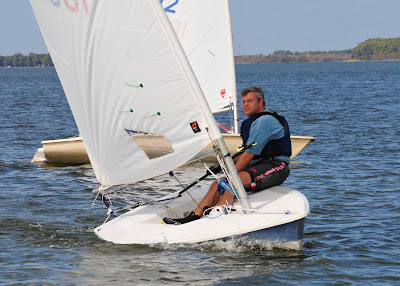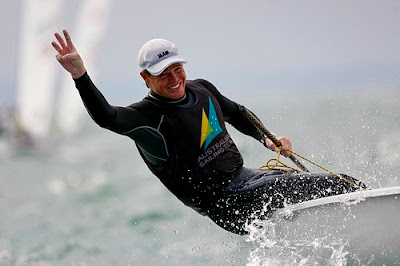The Laser Sailor and the Life Coach.. Chapter One.
In the picture is our local Laser PRO on the left and your “Life Coach” on the right.
We old folks need to be introduced to the idea of “Coaching”. Most of us are familiar with the Football Coach and the Basketball Coach. We called them Coach Jones and Coach Smith. We are familiar with the teacher, instructor, trainer, mentor, leader, captain, professor, doctor, lawyer, accountant, insurance agent, financial advisor, minister, police and judge. They all give advise.
Now we have the sailing coach, parenting coach, physical coach, family coach but/and what is the the “life coach” thing?
Slowly we have been learning about exercise, diet and a lot of other little things that add up to a long and happy life – but they don’t seem to be getting much attention, so maybe we have a need for someone to put it all together for you. Soooo, if you are interested, Laser sailors, here is your LIFE COACH. It will come in multiple chapters. Perhaps better to call it “life instructions”, because we will not be looking over your shoulder and making comments or reviewing your last actions like a real coach should be doing.
What has all this to do with Laser sailing? A smarter, stronger, and happier person is a better Laser sailor, maybe? What do you think? And if you live longer, you might sail more?
Start with exercising. Maybe the most important and most widely disregarded. As long ago as 1971 the German Ernst Van Aaken MD reported marked decrease in cancer in veteran long distance runners. (Figure out that connection?) Easier to understand how running and exercise helps reduce weight, reduces type two diabetes, lowers cholesterol, lowers blood sugar, prevents heart attacks. Stimulates stronger bones and keeps joints moving. Running stimulates the release of “happy hormones” that make people happier and maybe smarter. (The runner’s high after 30 to 60 minutes running.) Exercise simulates formation of new brain cells, something that a few years ago we thought didn’t happen at all. (You had so many brain cells at a young age and only lost cells after that.)
So RUN if you can. Walk if you can’t. Ride a bike if you must, or swim or dance or mix up the bunch. Apparently the body was meant to move and it does better if it is doing it. Do as much as you can. Start out slow if you need to and gradually increase. How much? As much as you can fit into your life. Skip the elevator. Take the stairs. Park further away at Walmart. When waiting, get up and walk around. Turn off the TV.
Maybe do the pedometer thing and go for 10,000 steps (4 or 5 miles). The 10,000 steps come from some Japanese suggestion. Not a bad suggestion, but not set in stone.
Laser sailors will hike longer, work the waves better, sail happier.
When you get past the age of 25 or 30 years, things and strength will start going down hill, but if you keep moving, it will not go so fast.
Listen to your body– if you walk/run and feel tired and sore , rest a little. If you get sore knee, foot, etc – switch to the bike which pounds less, or swimming which unloads the weight while you still use all the muscles. Back to run/walk when the soreness is gone or continue the other activity if you enjoy it more..
Get with your exercise.
Coming later in other Chapters–eat or not eat, think, friends, community, reduced stress, laugh, share, forgive, tolerate, learn, behavior modification, and goal setting.
.



















































